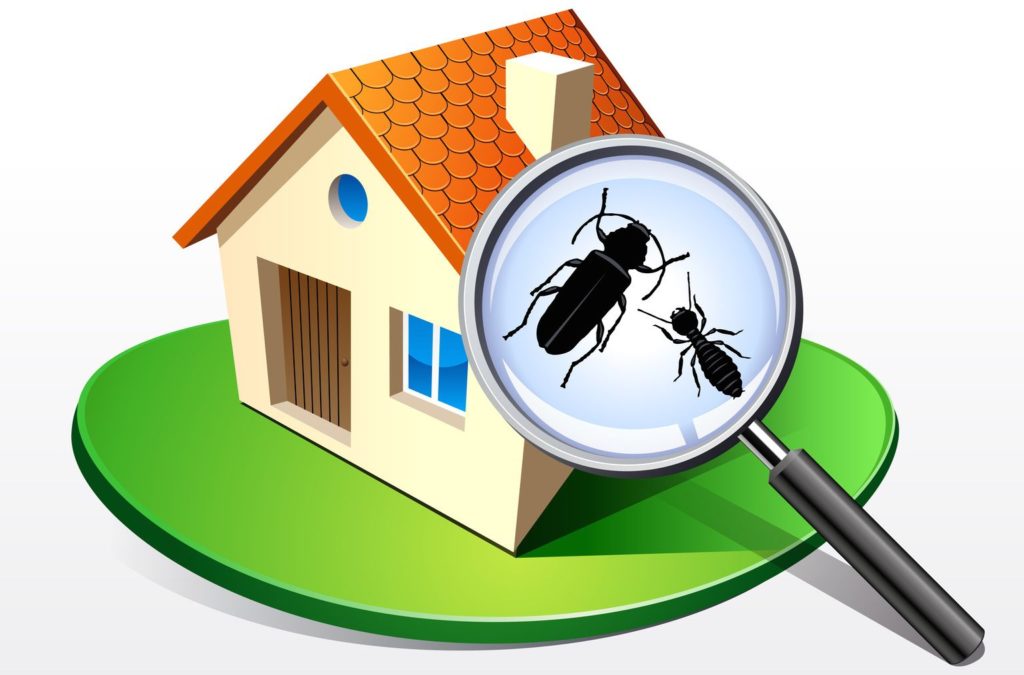As a homeowner, you know the aggravation of having an invasion of pests. No one wants creepy crawlers gnawing away at the structure of their home. One of the worst home invaders is the termite. Of the 2,000 species found worldwide, at least 20 of them are categorized as structural pests meaning they can do thousands in damage to your home in a relatively short time.

Colonies of them will invade your home’s wooden components to build nests eating wood as they go. To make matters worse, termites are so hard to spot, they can do lots of damage before you are aware of them.
1. Eliminate or Reduce Moisture
Termites love moisture. Check for leaking pipes, appliances, and dripping faucets and showerheads. Fixing all these leaks will create less of a pet-friendly zone. Maintain the exterior of your home including wood-framed windows, wooden siding, and roof. A leaky roof is an excellent source of moisture.
Patching and painting will lower the chance of developing leaks behind walls. Keep the crawlspace or basement moisture-free by installing a sump pump. Humidifiers can be used to help control moisture anywhere in the home.
2. Tidy Up Outdoors
Keep dead tree limbs pruned and trim shrubbery at away from your home’s exterior. The airflow will help dry away dampness more quickly. Watch out for overgrown plants and brush outdoors. Termites know they’ll find a source of water nearby.
If you have a fireplace, termites will be delighted to find a woodpile. Store the woodpile as far away as possible from your home and other structures on the property. Termites also love a pile of wood mulch. Consider pea gravel, rubber, or another non-organic mulch.
3. Install Termite Barriers
Termite barriers work really well to keep termites out of a home. They work by reducing points of entry where insects commonly invade. Termite barrier installers can install these products either pre or post-construction. Termite barriers are one of the best solutions available today to avoid wood-eating insects altogether.
The initial cost of termite barriers will be more than worth the cost considering the structural damage these insects can do. Installers offer inspections and warranties with their services.
4. Avoid Wooden Furniture and Cellulose
Many species of termites will burrow into anything wooden including furniture. You can lessen the chance of an invasion by replacing wooden furniture with metal or other materials. If it is unrealistic to eliminate all of your wooden furniture, check pieces often by tapping the surface with a hammer to note a hollow sound. If you suspect termites, contact a pest control service. It left, the termites will flourish and invade other areas.
5. Properly Store Wooden and Cardboard Boxes
Avoid storing wooden boxes near walls or cracks where termites could be attracted to them. Dispose of cardboard boxes. They are easily recycled. If you must use cardboard boxes, create storage areas for them inside metal garage cabinets. Like wood, cardboard
is composed of cellulose which termites feast on. Old clothing is also a source of cellulose. If you have old clothing stored in cardboard boxes, correct this problem immediately.
6. Seal Cracks and Crevices
Check thoroughly for small openings such as cracks, crevices, and tiny holes. Look for any places where light passes through and seal them immediately. These areas are gateways for termites and other pests to enter your home giving them a chance to build nests and set up colonies. Sealants and caulking are usually effective.
If these don’t work, a small amount of carpentry may be required. Make sure all windows and doors fit into the frames securely without crevices as these can also be points of entry for pests.
7. Clean Your Home on a Regular Basis
Like rodents, roaches, and other pests, termites are attracted to areas with some dirt around. A dirty home is much more prone to infestations of any kind. Regular sweeping, vacuuming and cleaning is a great way to prevent an initial infestation of termites and other bugs.
Avoid storing loads of bags and other paper products in draws and cabinets. Watch out for piles of old clothing and rags in closets and storage areas. These materials contain cellulose which feeds termites.
Also Read- 10 Resources to help you Solve your Plumbing Problems











